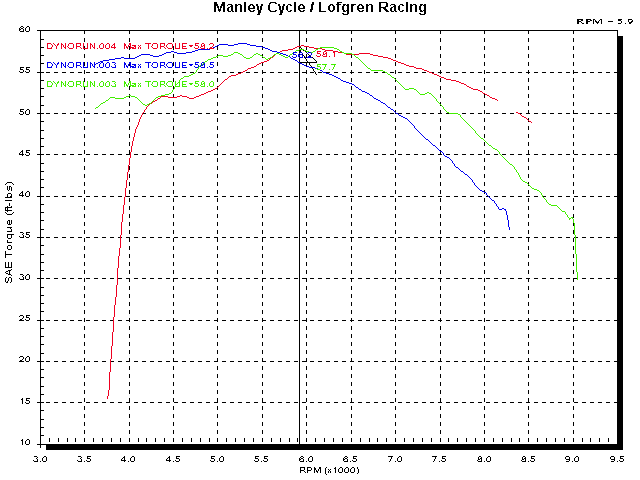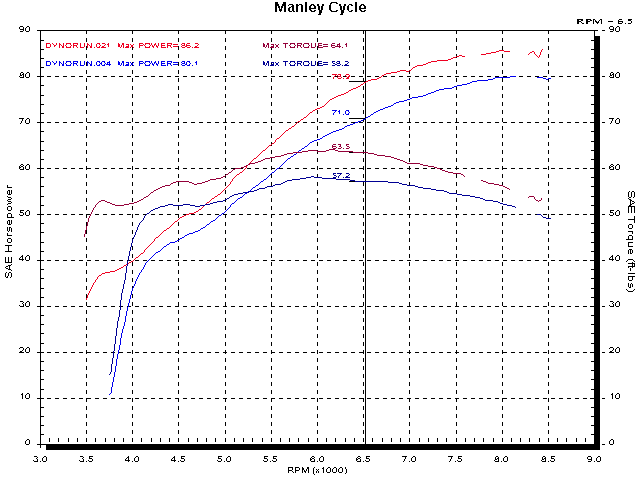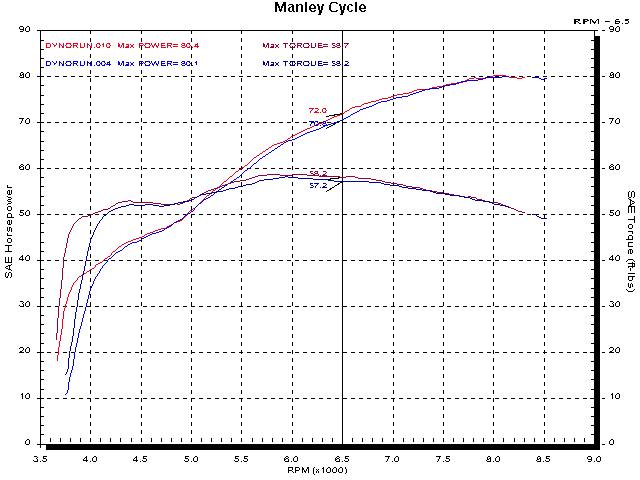
Adding a 944cc Kit to a Fuel Injected M900ie
Ducati has put their M900 through a few changes in it's life.
First, it came with a 900SS engine (minus tach drive.) This was good for 73HP.
Then they decided to use the same heads, cams and valves as the E900. (These are the same as 750 Paso, 750 Sport and '90s 750SS.)
This combination makes a little milder engine. Maybe Ducati had problems with wheelies, or maybe they just wanted to take a step back-wards to allow an up-grade at a later date (Monster S?)
When Ducati introduced the fuel injected M900 it appears that they just installed the fuel injected 900SS engine. ( I say 'appears' because I haven't actually confirmed that the M900ie has the same cams as the FI 900SS. But it does have the same power and characteristics.)
Below is a comparison of the torque of all three;

I showed the torque only because it is interesting to note that all three have very similar torque (as they should) because torque is a function of displacement and efficiency.
Next, is the power and torque chart;

As you can see, the difference in the power of these three engines is in the RPM at which the peak torque is produced.
Make no mistake, the one with the larger power figures (ridden appropriately) is the fastest even though the torque is the same.
Also, no whining about the 5-6 lb-ft of torque difference at 5000 RPM. From there on up, the mild-cam M900 is heading for the ditch.
I think that the injected Monster's 46mm throttle bodies are the major contributor to the excellent power.
On the injected 2-valve bikes, the throttle bodies are closer to the heads than the carbs. This makes the inlet tract tapered (this is different from the fact that they are just larger) which makes it resonate at a different frequency.
I haven't tested the throttle bodies on the flow-bench but previous tests with carbs have shown that there isn't much difference in system flow between stock and taper-bored or Keihins.
We installed the 944cc kit (BCM pistons) uploaded an FIM map, then modified it to suit the extra ccs, and below is the result shown with the stock power.

When we baselined the bike we decided to test the open air-box modification (as well as testing the new FIM Ultimap software.)
I made one fuel change on the WOT line and it turned out to be a little rich right at the top, but we were looking for the resonance changes through the torque peak.
Rather than continue flogging Thomas's bike we reloaded the stock map
to confirm that the up-load/re-load thing was working.
Run number 10 was with the stock map, without the air-box top. At 8000 RPM it was a little lean, you can see that it doesn't kill a bunch of power ( I think there might be a little on top with a fuel adjustment, but we were just going to tear it apart anyway.) The fact that it went lean tells me that there was more air-flow.
The important part is at 6500 RPM (where the cursor is) the stock curve has a little dip where the open air-box doesn't. The difference is air-box resonance.
So, we tuned it with an open air-box.